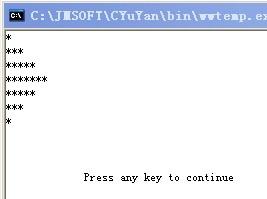第18章 特殊工具与技术(3)
18.1.4 定位new表达式
标准库函数operator new和operator delete是allocator的allocate和deallocate成员的低级版本,它们都分配但不初始化内存。
allocator的成员construct和destroy也有两个低级选择,这些成员在由allocator对象分配的空间中初始化和撤销对象。
类似于construct成员,有第三种new表达式,称为定位new(placement new)。定位new表达式在已分配的原始内存中初始化一个对象,它与new的其他版本的不同之处在于,它不分配内存。相反,它接受指向已分配但未构造内存的指针,并在该内存中初始化一个对象。实际上,定位new表达式使我们能够在特定的、预分配的内存地址构造一个对象。
定位new表达式的形式是:
new (place_address) type
new (place_address) type (initializer-list)
new (place_address) type
new (place_address) type (initializer-list)定位new表达式比allocator类的construct成员更灵活,定位new表达式初始化一个对象的时候,它可以使用任何构造函数,并直接建立对象。construct函数总是使用复制构造函数。
template<class T>
void Vector<T>::push_back(const T& t){
if(first_free==end)
reallocate(); //gets more space and copies existing elements to it
new(first_free) T(t);
++first_free;
}
template<class T>
void Vector<T>::push_back(const T& t){
if(first_free==end)
reallocate(); //gets more space and copies existing elements to it
new(first_free) T(t);
++first_free;
}
18.1.5 显式析构函数的调用
正如定位new表达式是使用allocator类的construct成员的低级选择,我们可以使用析构函数的显式调用作为调用destroy函数的低级选择。
for(T *p=first_free;p!=elements;){
p->~T();
}
for(T *p=first_free;p!=elements;){
p->~T();
}显式调用析构函数的效果是适当清除对象本身。但是,并没有释放对象所占的内存,如果需要,可以重用该内存空间。
调用operator delete函数不会运行析构函数,它只释放指定的内存。
摘自 xufei96的专栏
补充:软件开发 , C++ ,




